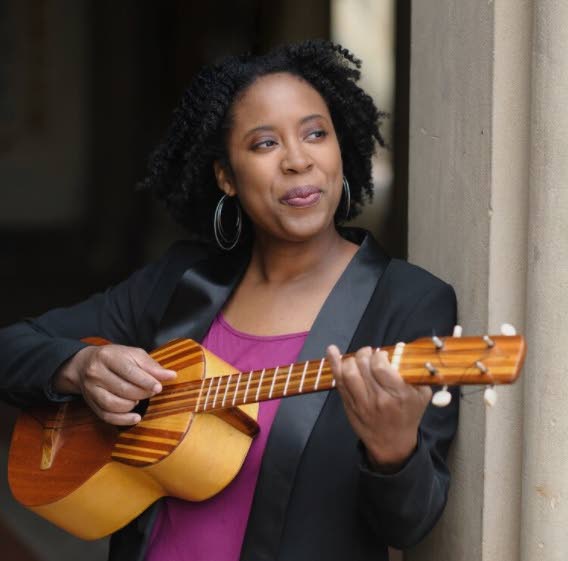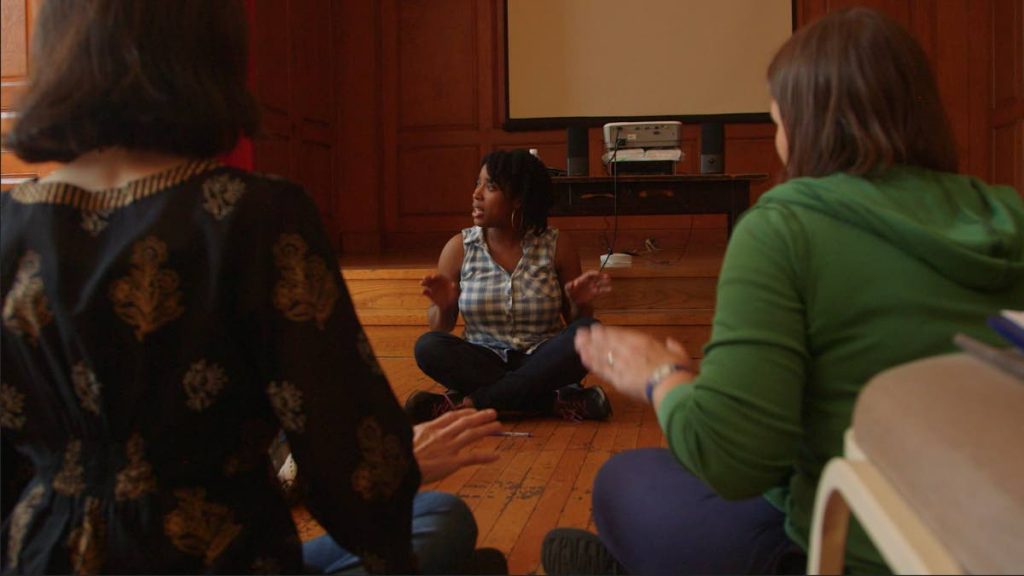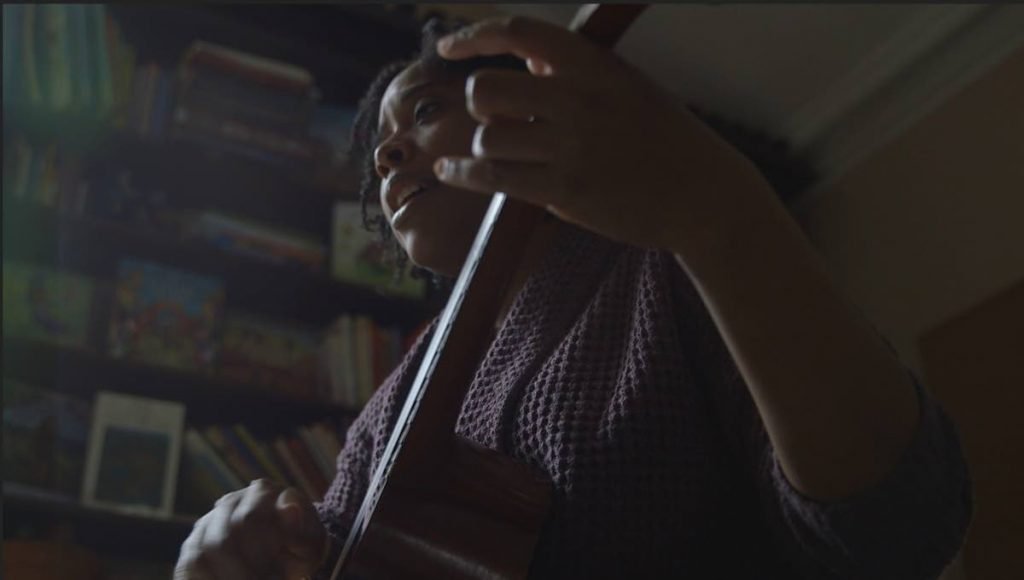Parang doc talks Daisy, bridging cultures and 'vulturism'

Dr Danielle Brown, subject of the New York Emmy-nominated music documentary short Parang, says she is pleased by the positive responses to the film both from Trinidad and Tobago and the US.
Brown is an artist, scholar, and entrepreneur. She earned a doctorate in music from New York University with a concentration in ethnomusicology and specialisation in the music of Latin America and the Caribbean.
Soundtrack of life
In an e-mail interview with Newsday, she explained the Caribbean is in her blood.
"I grew up in East Flatbush, Brooklyn, in a community of people mostly from the English-speaking Caribbean, Haiti, and Panama and their descendants. My parents are from Trinidad, so I grew up eating Trini food (roti, stew chicken, callaloo, etcetera). I grew up hearing Trinbagonian proverbs and folk tales (my dad was the best at scaring the pants off of us with stories of jumbies and the supernatural). Musically, I heard a lot of calypso, soca, reggae, and dancehall playing in the neighbourhood."
Brown said on reflection she was growing up at a time when a lot of music that remains popular today was in its infancy – hip hop, soca, and dancehall.
"These musics make up the soundtrack of my life. I don’t know if I thought too much about the music at that time, but I was learning a lot by listening, and they were all musics that I could identify with, musics that reflected me and my experiences."
Parang opens with Brown performing Golpe by TT parang group La Divina Pastora, which was shot at the 2018 Brooklyn Folk Festival, and during a discussion of Trinidad's diversity.
"Outside of TT people are not always aware of our diversity both with respect to people and music. Parang is an artform that is not as well-known as say calypso and pan. Parang was also the subject of my dissertation research, and so I like to pay homage to the artform that is just as much a part of my cultural heritage as calypso and steelpan.
"Like many, I admire Daisy (Voisin) and her body of work. I love Golpe in particular because of the bravado expressed in the lyrics. Here’s a song where Daisy, a woman, is singing in a tradition that was once male-dominated and where men would verbally brag and show off. And in the text, Daisy shows that she can do the same; she can hold her own. She can brag and show off just like the best of them. Don’t mind she’s a woman. She sings that she’s 'braver than a bull, more agile than a deer.' I love it. I’m from New York where we love a bit of 'trash talking.' (laughs). When I sing that song, I add my own verse to sort of big-up myself in that same tradition. To capture a little bit of that fiery spirit."
She began her set at the Brooklyn Folk Festival with the spiritual Wade in the Water and then Portrait of Trinidad (by Mighty Bomber), "a song my mother would sing often and that has special meaning to me."
During Parang there is also a scene of Brown performing Sparrow's classic Jean and Dinah.
"I like to say that my mother has a Sparrow song for every occasion. Jean and Dinah was one that my mother introduced to me and my brother at a young age.
"Why is my mom singing a song about prostitution to kids, right? (laughs).

-
"But my mom was very intentional. She used the song to teach us about WWII, Lend-Lease laws, the US presence in Chaguaramas, and Eric Williams’ resolve to get the US off the bases before the lease was up.
"Later when I was a student at Trinity College in Hartford, Connecticut, I remember the late Tony Hall bringing his stage production Jean and Dinah to the campus. It allowed us to ponder the perspective of the prostitutes who are the subject of the calypso, but who were voiceless in the song. When I became a teacher, I would teach Jean and Dinah to my students as a way of teaching them about history, politics, and the socio-economic ramifications of the US presence in TT. Jean and Dinah is just one of many calypsoes and music from across the Caribbean that I use as an educational tool."
Brown said parang is a genre she loves and she loves TT music in general.
"Perhaps because of some of the work that I am doing right now, my thoughts are that I would love to see us as a collective – Trinbagonians across the diaspora – not just appreciate our music, but also protect it from the culture vulturism that we see happening every day, and that those of us living abroad maybe see from a slightly different perspective than those in TT. We can share our music and our culture, but we have to be mindful not to give it away. And we have to understand the global economic systems that are in place that would have us till the soil and cultivate the land, but not give us any of the fruits."
In November 2014 Brown founded My People Tell Stories, an initiative to "promote and validate the knowledge produced by people of colour and subsequently create an education system that is more diverse, equitable, and inclusive."
My People Tell Stories provides services in arts education, including professional development for teachers, artists, and researchers who seek to centre diverse, inclusive, and equitable practices in their work.

that is a part of her cultural heritage. -
My People Tell Stories includes the Caribbean Music Pedagogy Workshop (CMPW), which teaches teachers, educators, artists and other interested people to teach the music in a way that is more authentic.
Caribbean parallels
Brooklyn-based Haitian filmmaker Emmanuel "Mano" Alexandre Jr met Brown while researching a folk music documentary for Brooklyn's BRIC Television about the Brooklyn Folk Festival organised by Eli Smith.
Alexandre told Newsday in a telephone interview that, despite his coming to the US at 14 and Brown being born there, he found many parallels to his own experience: "The passion about back home and stories about back home and dedication to continuing the work in the diaspora. And the understanding of the cultural legacy of her background."
He added they were both young black artists/educators who were trying to create change and share stories in this American paradigm and society.
"The immigrant story has always been important for me. That is the thing that made me gravitate to her so much."
He recalled when he met her he immediately thought this was something different because of her passion and her work teaching non-Trinidadian and non-Caribbean people music from her country and the Black African diaspora.
"It resonated with me, and it is the kind of work I do in terms of my films."
He decided she was the perfect candidate for a documentary.

Alexandre visited Brown's home twice for the documentary and he recalled it was great being inside another Caribbean person's house and she truly opened her home to him.
"To see that same experience in a different person from a different island, it is really nice. The same parallels, the same type of stories, but from different islanders."
Alexandre said he was glad to tell her story and recalled it took a while to go through the interviews and bring out the most important aspect of her work.
"She's a very interesting person that is passionate and has a lot of ideas. It was very important that I did it justice."
He described hearing about parang and TT music as a "wonderful and magical" learning experience, and it reminded him of the stories of how Christmas is celebrated in Haiti.
On calling the short film "Parang", Alexandre said he settled on the name as he felt people needed to know more about this style of music and expressed hope this will encourage research.
Parang parang
Brown described the experience of being filmed for the documentary as "very interesting."
"I’m not used to being followed by a man with a camera...in meh house…on de street…in de subway. All over de place! (laughs). But Mano explained the process to me. Honestly, he was very inconspicuous. I must have forgotten that he was there at various points."
She reported receiving a lot of positive feedback from people on the documentary.
"It’s nice to get messages from people here in the US and in TT. As someone who bridges both cultures, I’m glad that the film resonated with people in both places."
When she heard Parang had been nominated for a New York Emmy Award from the National Academy of Television Arts and Sciences in the category of Education/Schools Short Form Content (under ten minutes) she was very happy for Alexandre.

"I think he did an excellent job capturing the spirit of who I am, and what I’ve been trying to accomplish through my work at My People Tell Stories. And so, I’m grateful that he saw something in me and my work that he felt was worth documenting. To see it be nominated for an Emmy Award is especially sweet."
Alexandre said the NY Emmy nomination took him by surprise.
"One of my colleagues (who was watching the nominations) sent a text. They said, 'I just heard your name and your piece.' I was like, 'Wow.' I went online to find out if it was true."
He said a win would mean an affirmation of the decisions he made in terms of the story.
"(It is also) affirmation of how unique parang is as well." And Brown is also looking ahead. She said due to the pandemic she has not hosted CMPW for the past two years.
"However, I’m hoping to have it up and running again in 2022. And how can I not incorporate TT music into the work that I do? Yuh want meh mudda to give me licks? (laughs)."
You can watch Parang on Alexandre's website manosalon.live. The 64th Annual New York Emmy Awards is scheduled to take place in September.

Comments
"Parang doc talks Daisy, bridging cultures and ‘vulturism’"